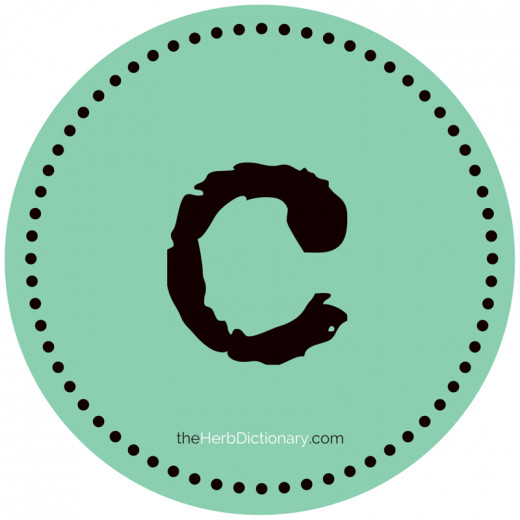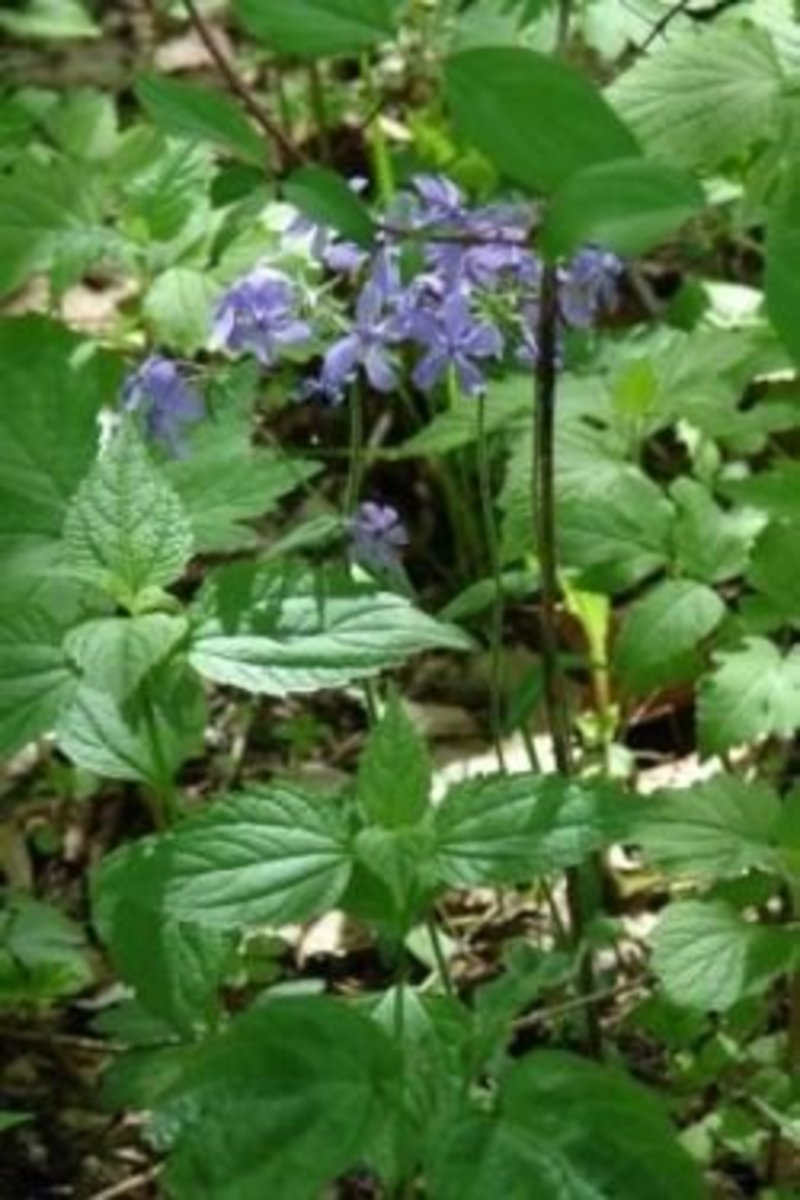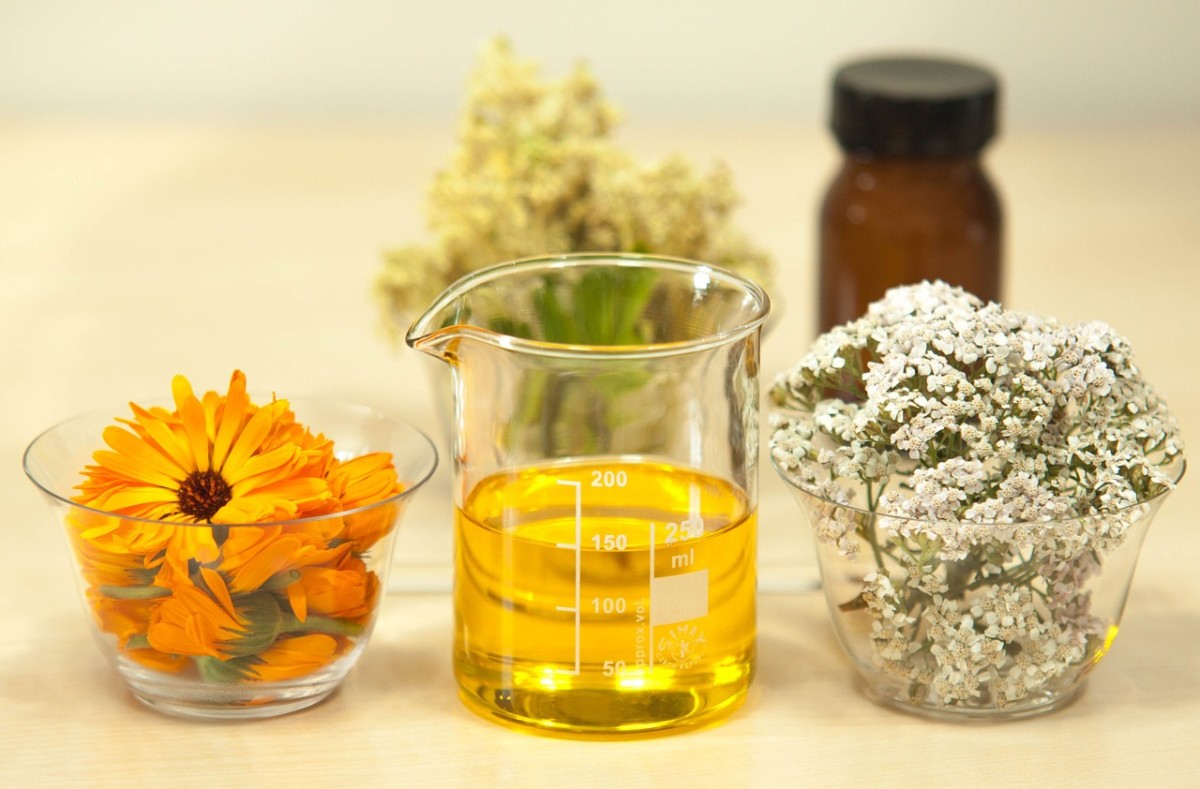Herbal Dictionary: C

CALEFACIENT
A calefacient herb is one that produces an external sensation of warmth when it is applied to the skin.
Calefacient herbs are typically applied topically, in the form of a poultice or ointment. This causes a sense of warmth on the area to which it is applied.
Antonym: Refrigerant
Calefacient Herbs:
- Cayenne Pepper (Capsicum annuum)
- Ginger (Zingiber officinale)
- Mustard (Brassica nigra)
- Turmeric (Curcuma longa)
In this video, Kaye Sehm recommends cayenne pepper as an herbal remedy for cold feet, and shows how to make a cayenne poultice. Cayenne pepper, she says, stimulates circulation, bringing heat to at the applied area.
CARDIOTONIC
An herb that serves as a nutritive and restorative tonic for the heart in particular and the circulatory vessels in general. While cardiac tonics are not a remedy for any one heart condition, they are valued as supportive therapy to tone and restore function to heart and vascular system. They also serve well as adjunct therapy for treating hypertension.
Also called: Cardiac, cardiac tonic
Cardiotonic Herbs:
- Cocoa (Theobroma cacao)
- Green Tea (Camellia sinensis)
- Hawthorn berry (Crataegus monogyna)
- Hibiscus Flowers (Hibiscus sabdariffa)
- Motherwort (Leonurus cardiac)
- Pomegranate (Punica granatum)
In this video, Dr. Sangiuliano discusses heart healthy herbs, including hawthorn berry, garlic and green tea.
CARMINATIVE
An herb that acts to relieve flatulence (bloating) in the intestinal tract, and helps expel gas. Carminative herbs ease abdominal cramping and help expel gas from the digestive tract.
They also promote normal peristalsis and improve weak digestion resulting from nervousness, anxiety or depression.
Carminative Herbs:
- Aniseed (Pimpinella anisum)
- Caraway (Carum carvi)
- Chamomile (Matricaria recutita)
- Ginger (Zingiber officinale)
- Fennel (Foeniculum vulgare)
- Lavender (Lavandula angustifolia)
- Peppermint (Mentha piperita)
In this video, herbalist David Hoffmann explains the herbal actions of carminative and anti-infective herbs.
CATHARTIC
An herb that causes evacuation of the bowels. Cathartic herbs range from mild laxatives to vigorous purgatives.
Cathartic Herbs:
- Aloe (Aloe vera)
- Castor Oil (Ricinus communis)
- Figs (Ficus carica)
- Onion (Allium cepa)
- Prunes (Prunus domestica)
- Senna (Cassia senna)
CHELATED MINERAL
A mineral that promotes absorption in the body by binding with protein. A targeted-chelated mineral is one that binds to a specific amino acid, and targeted toward a specific body organ
CHEMOPREVENTIVE
An herb or compound that works to prevent, reverse or suppress the progression to of cancer in the body.
Chemopreventive Herbs
- Astragalus (Astragalus propinquus)
- Reishi Mushrooms (Ganoderma lucidum)
- Saffron (Crocus sativus)
- Shiitake Mushrooms (Lentinula edodes)
- Turmeric (Curcuma longa)
In this video, Roy Upton, executive director of the American Herbal Pharmacopoeia, discusses the importance of integrating herbal medicine as a part of any cancer treatment. Some chemopreventive herbs he includes in his discussion are: Astragalus, Reishi and Shiitake mushrooms.
CHOLERETIC
A choleretic herb acts to increase the volume of bile that the liver produces. This enhances the body’s ability to release toxins. This also has a laxative effect, which improves the detox capacity of the body’s cell tissue.
Choleretic Herbs
- Dandelion (Taraxacum officinalis)
- Goldenseal (Hydrastis canadensis)
- Milk thistle (Silybum marianum)
- Turmeric (Curcuma longa)
COUGH SUPPRESSANT
An herb or compound that blocks - or suppresses - the cough reflex.
See Also: Antitussive
Cough Suppressant vs. Expectorant
Normally, coughing is the body’s way to clear the airways of mucus. As such, you should only use a cough suppressant for dry, hacking coughs. Say, for example, you need to catch some zzz's but a nagging cough won’t let you? A cough suppressant would be what you need.
If your cough produces mucus, on the other hand, you would take an expectorant to thin the mucus, making it easier to expel to more easily expel it, look into expectorants.On the other hand, if you need to thin mucus, to make it easier to expel, you would use an expectorant.
References
- An Evidence-based Review of Astragalus Membranaceus (Astragalus) for Cancer Patients
- Anticancer and carcinogenic properties of curcumin: Considerations for its clinical development as a cancer chemopreventive and chemotherapeutic agent
- Cancer chemopreventive and tumoricidal properties of saffron (Crocus sativus L.)
- David Hoffmann L. BSc (Hons), MNIMH
-
Paula Jo Broadfoot, 2009. Integrating Complementary Medicine into Veterinary Practice.






